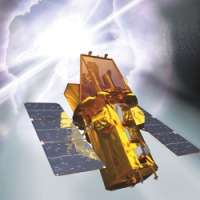Telescope records massive explosion 12 billion light years away

The University of Western Australia's Zadko Telescope has captured the explosive birth of a black hole 12 billion light years away that took place before the Earth and sun existed.
The images reveal a blast so powerful it was equivalent to a billion suns shining together for one minute.
The explosion was recorded at 10.49pm on Thursday 2 February when a NASA satellite orbiting the Earth sent an alert to the Zadko Telescope.
Within seconds of NASA detecting the explosion, Zadko swung into action, taking very sensitive images of the sky.
UWA Zadko Science Director Associate Professor David Coward said what the images revealed was extraordinary.
"Over several minutes we saw a rapidly brightening star, where there was no star before," Professor Coward said.
"The light from the explosion had travelled for 12 billion years before hitting the telescope."
Professor Coward said the discovery was important because Zadko had provided one of the most detailed recordings of a massive star exploding. The event, named GRB170205 was monitored by Zadko for more than 24 hours.
The Zadko images will be used to test the "fireball model", which so far is the only feasible description in the world of how these explosions occur. The discovery will help understand the extreme physics at play when a massive star explodes.
Provided by University of Western Australia


















